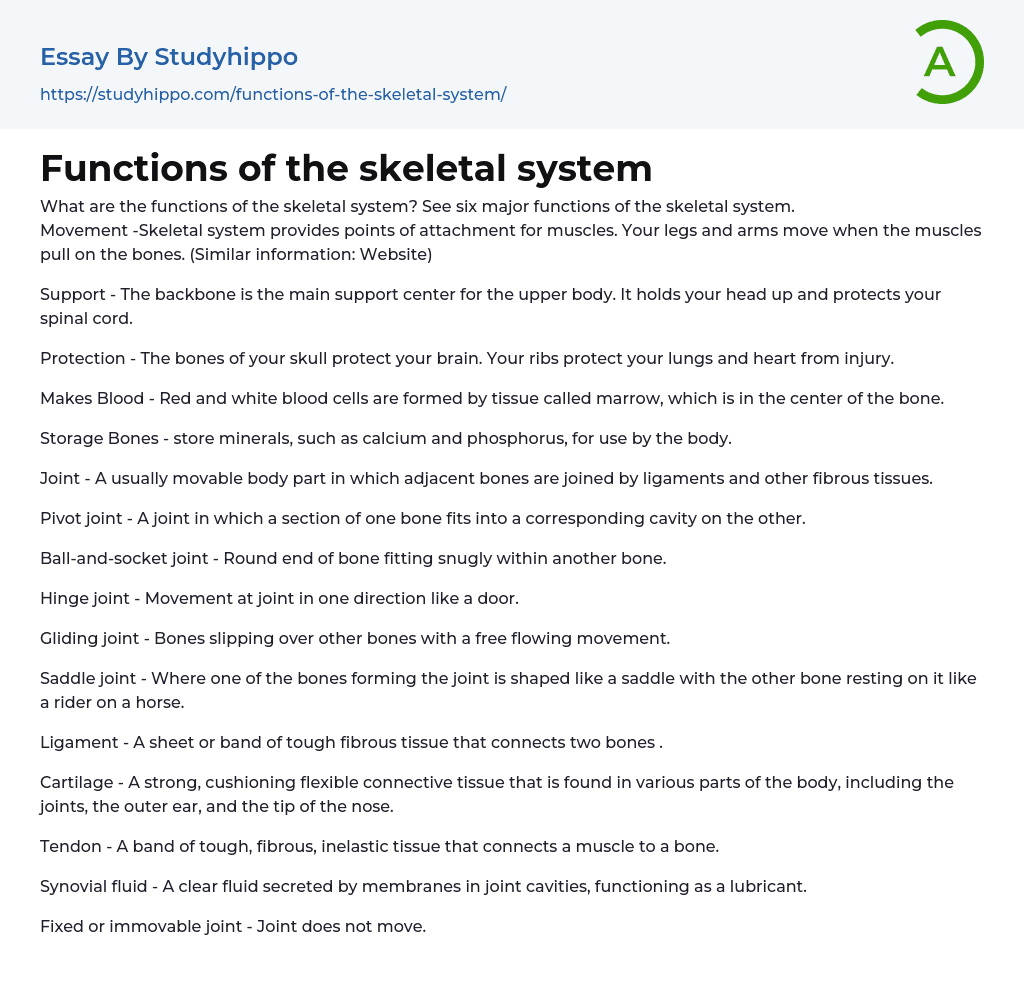The adult human skeleton consists of about 206 bones. Almost all of them are combined into a single whole with the help of joints, ligaments and other connections. At birth, the human skeleton consists of more than 270 bones; the number of bones in adulthood decreases to 205-208, as some bones grow together, mainly the bones of the skull, pelvis and spine grow together.
See major functions of the skeletal system:
- Movement -Skeletal system provides points of attachment for muscles. Your legs and arms move when the muscles pull on the bones. (Similar information: Website)
- Support - The backbone is the main support center for the upper body. It holds your head up and protects your spinal cord.
- Protection - The bones of your skull protect your brain. Your ribs protect your lungs and heart from injury.<
.../li>
- Makes Blood - Red and white blood cells are formed by tissue called marrow, which is in the center of the bone.
- Storage Bones - store minerals, such as calcium and phosphorus, for use by the body.
- Joint - A usually movable body part in which adjacent bones are joined by ligaments and other fibrous tissues.
Basic concepts:
Pivot joint - A joint in which a section of one bone fits into a corresponding cavity on the other.
Ball-and-socket joint - Round end of bone fitting snugly within another bone.
Hinge joint - Movement at joint in one direction like a door.
Gliding joint - Bones slipping over other bones with a free flowing movement.
Saddle joint - Where one of the bones forming the joint is shaped like a saddle with the other bone resting on it like a rider on a horse.
Ligament -
View entire sampleJoin StudyHippo to see entire essay
A sheet or band of tough fibrous tissue that connects two bones .
Cartilage - A strong, cushioning flexible connective tissue that is found in various parts of the body, including the joints, the outer ear, and the tip of the nose.
- Tendon - A band of tough, fibrous, inelastic tissue that connects a muscle to a bone.
- Synovial fluid - A clear fluid secreted by membranes in joint cavities, functioning as a lubricant.
- Fixed or immovable joint - Joint does not move.
- Microbiology essays
- Bacteria essays
- Cell essays
- Enzyme essays
- Photosynthesis essays
- Plant essays
- Natural Selection essays
- Protein essays
- Viruses essays
- Cell Membrane essays
- Human essays
- Stem Cell essays
- Breeding essays
- Biotechnology essays
- Cystic Fibrosis essays
- Tree essays
- Seed essays
- Coronavirus essays
- Zika Virus essays
- Pregnancy essays
- Death essays
- Asthma essays
- Chronic Pain essays
- Diabetes essays
- Infection essays
- Infertility essays
- Pain essays
- Sexually Transmitted Disease essays
- Cholesterol essays
- Epidemic essays
- Pathogen essays
- Symptom essays
- Water supply essays
- Myocardial Infarction essays
- Chronic essays
- Hypertension essays
- Black Death essays
- Breast Cancer essays
- Down Syndrome essays
- Apoptosis essays
- Tuskegee Syphilis Experiment essays
- Type 2 Diabetes essays
- Agriculture essays
- Albert einstein essays
- Animals essays
- Archaeology essays
- Bear essays
- Biology essays
- Birds essays
- Butterfly essays




